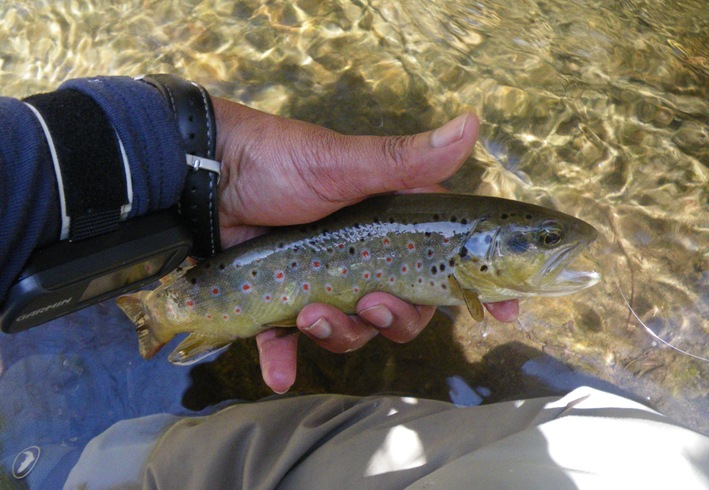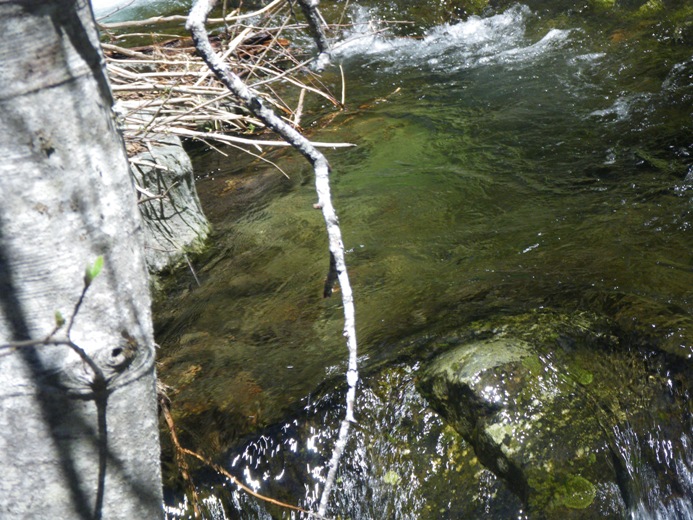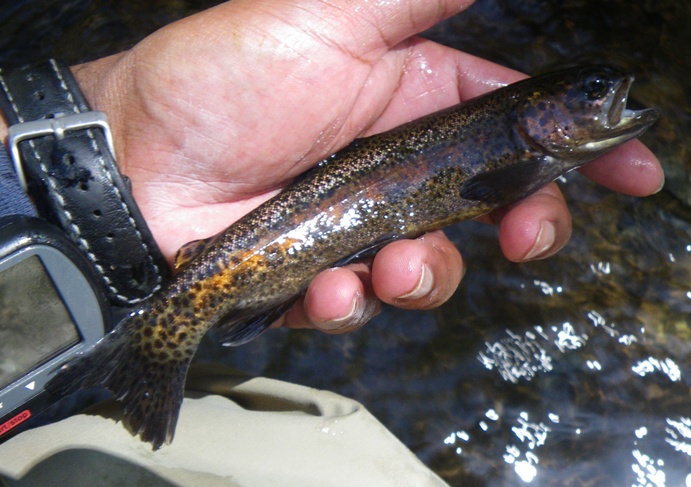|
|
|
|
|
May 9th 2009- Butterball Creek, Yosemite National Park Time: Saturday 11:00am - 3:00pm Fishing high mountain streams and lakes provides the greatest challenge possible in fly fishing, casting to a sighted fish with dry fly, wet, nymph or streamer. A challenge that is not to be taken lightly for we pit thousands of years of adaptation and refined instincts for survival, against our lifetime of fishing knowledge and experience. It seems hardly fair; yet, we can and do prevail and therein lies the satisfaction. I wrote that the a day or two before going to Butterball Creek. No reason really, it just popped into me head. My opening day of any season really starts with the first day I fish a mountain stream. From then until September its long walks, little fishing and tiny fish. Why do I do it? Why do any of us that covet the trout of the small mountain stream and lake? Iíd like to think that itís the simplicity. High country fly fishing is fly fishing in itís simplest most unadulterated form- the essence of fly fishing if you will. It is with a sense of humility and reverence that I approach Butterball Creek each year. Itís small and brushy. Itís fish are spooky. Anyone could catch fish here but itís not a beginnerís stream and I never make the hike through the giant sequoia grove thinking itís a sure thing. I caught fish. The water temperatures were 43 degrees and the fish were willing to move a short distance for a properly presented fly. I missed fish to, either by missing the strike or having the fly start to drag before a following fish could snatch it off the surface. The fish were a bit skinny this trip. If its one thing a Butterball Brown is, itís not skinny. At least not normally but perhaps the drought has had an effect on the stream. If it wasnít for the fact that it is spring feed, it would probably dry up completely. Just above where I normally put in the stream forks. For the last few years Iíve been fishing up the fork on the right. Steve Beck in his book about fishing Yosemite notes that heís only ever caught rainbow trout in this fork and browns in the other fork. This makes sense, the right fork is steep, plunge pool water and the left fork more gradual, with slower runs, some deep water, and lots of cover. The right fork would stay cooler during the hot summer months- two forks that probably mimic the native habitat of both species pretty well. Iíve finally confirmed for myself that the right fork contains rainbow trout, stressed rainbow trout by the look of it. In general the rainbows seemed smaller than the browns and much thinner. This section has fewer trees over hanging the stream and as I made my way up the canyon, I found that the black ants that were crawling all over me on the lower stream were absent here. Accordingly, the rainbows werenít as interested in the black ant on the end of my line as the browns seemed to be. I tied on an elk hair caddis and had fished through a couple of pools before I realized that I had been stepping on fish. These fish positioned themselves differently than the browns. The stream was filled with a lot of fallen timber and the darkened rainbows were perfectly camouflaged along the edges and lip of the plunge pools. They didnít spook when I approached but simply and slowly edged to safety. Once I knew where and what to look for I was able to spot two larger fish. I missed both on an Elk Hair Caddis. The short drift of the plunge pool wasnít so short that the fish were going to be fooled twice. I switched to a beadhead soft hackle and with a tuck cast, dropped it in front of the larger fish. The fish held on long enough for me to pull into the next pool where it promptly disappeared. The smaller fish was more compliant. I landed it and called it a day.
Previous Yosemite / Ansel Adams Wilderness Chronicle Next Yosemite/Ansel Adams Wilderness Chronicle
|



